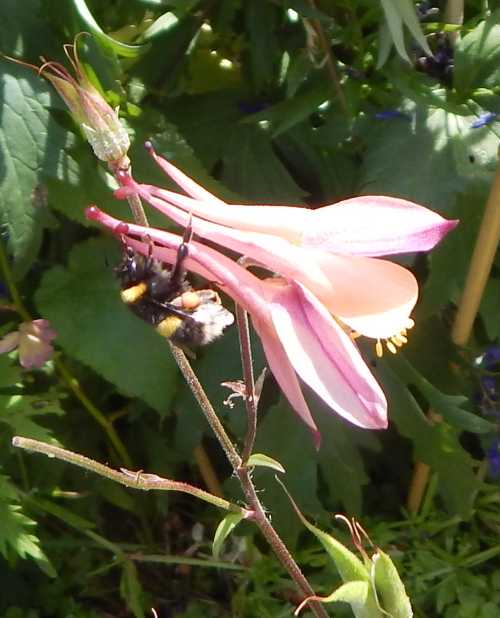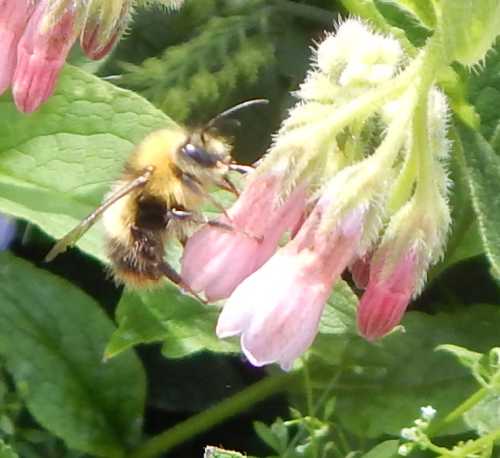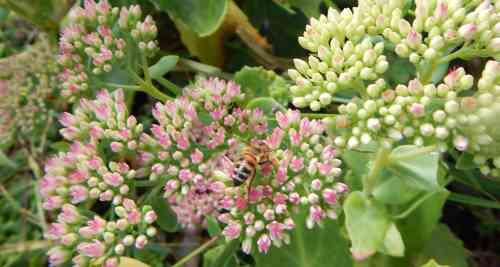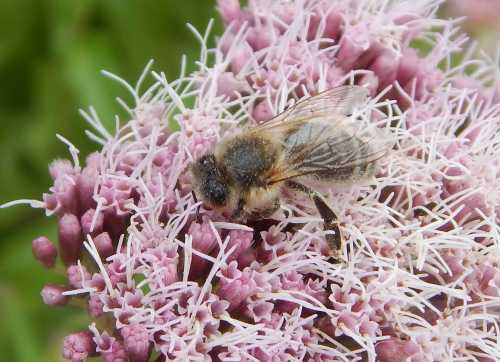Nectar Robbing And
Secondary Robbing
Updated: 28th January 2021
A while ago, I was able to observe and film several different bee species ‘nectar robbing’.
Foraging bees and other insects are attracted to flowers for food, in the form of nectar and pollen. Nectar is typically stored deep in the flower, so that any visiting insect may brush against the pollen on the anthers as they seek to gain access to it. In this way, pollen is carried on insects, enabling pollination to occur – this is referred to as ‘legitimate foraging’, and of course, both flower and bee benefit.
Watch bees nectar robbing
However, sometimes the nectar is difficult to reach, especially for short-tongued bees. In this case, the bee may use its mandibles (jaws) to bite a hole at the base of the flower in order to get to the nectar. Because the anthers are bypassed and the flower is not ‘rewarded’ by being pollinated, this is referred to as nectar robbing - or larceny. Sometimes, other insects (including bees) take advantage of the same hole as the flower replenishes the nectar source, and this is called ‘secondary robbing’ (or secondary larceny).
 A bumble bee nectar robbing Acquilegia flower
A bumble bee nectar robbing Acquilegia flowerBelow are several films of bees nectar robbing and secondary robbing comfrey, a herb that I have read, refills with nectar approximately every 45 minutes. A few days earlier, I had observed red mason bees (Osmia bicornis – previously named Osmia rufa) robbing the comfrey, but had not managed to capture them on film. They appeared to be engaging in the task of biting many of the holes that other bees were taking advantage of, although bumble bees certainly create holes for robbing.
Above: Female Red mason bee – Osmia bicornis, nectar robbing comfrey
Above: Bombus pratorum male, and female Osmia bicornis nectar robbing
Above: Honey bee nectar robbing
Does Nectar Robbing Prevent Pollination?
 Early bumble bee - Bombus pratorum nectar robbing comfrey flower.
Early bumble bee - Bombus pratorum nectar robbing comfrey flower.Just because nectar robbing may occur, this does
not necessarily mean the flower will not be pollinated. Sometimes a bee will enter the flower to
gather pollen and also take advantage of ready-made holes in flowers to access the nectar as well. I have observed
this several times. Unfortunately, I was unable to capture only a little video of this activity, but you can watch it below.
In the video below you can see a Bombus pratorum entering a flower, foraging for nectar. She is also carrying pollen in her corbicula (pollen baskets). This clearly shows that she is engaging in legitimate foraging. However, at the end of this short clip, she lands on a comfrey flower with the apparent intention of secondary robbing (she intended to nectar rob, using a hole previously made by another bee).
This bumble bee below also engages in legitimate foraging, but tries out the holes at the bottom of the comfrey flowers to get to the nectaries:
Read more about bumble bee foraging behaviours.

